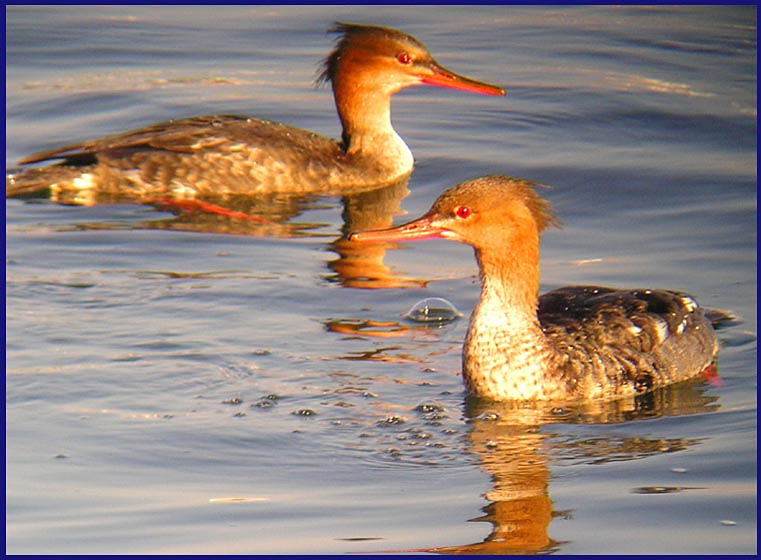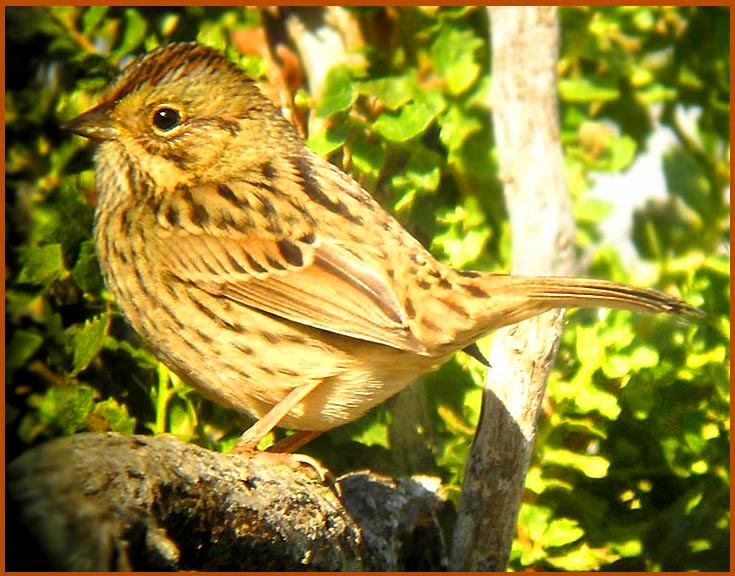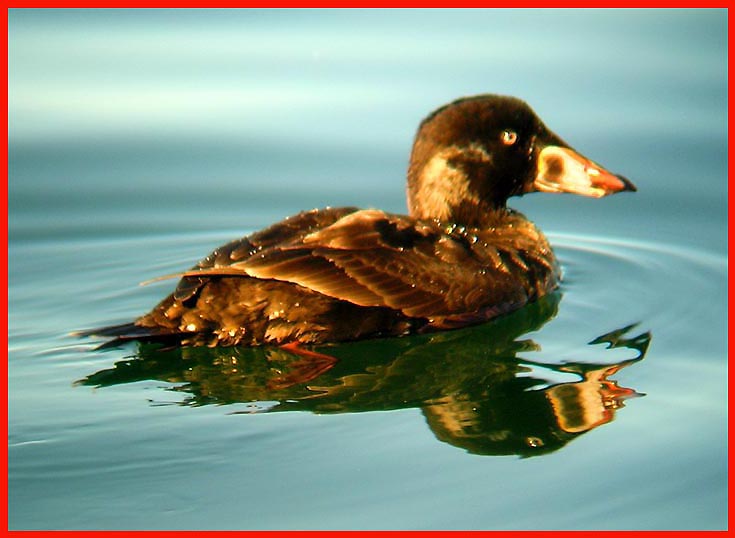|
Lincoln's Sparrow at Big Sur R. mouth,
25 Sep 2004
Here is the more typical digiscoped photo: an attempt to get a good close
image on which we can see details of specific feathers. This is a full-frame
shot. In retrospect, this is not a very good photo because of lighting
problems (overexposed background) but I like the picture anyway because
it is just so darn difficult to get any photo of this shy sparrow
"in the wild" (I have some nice ones from my home feeder, but that's different).
Yet, despite the fact we can see the fine
details of the greater coverts and tertials and scapulars, I'm not able
to age this individual with any confidence. Pyle's Identification Guide
(1997) relies heavily on the presence or absence of contrast (molt limits)
between the greater primary coverts and the greater secondary coverts,
and the shape of certain rectrices in the tail. We can't see those tail
feathers well. As to the greater coverts, we see the greater secondary
coverts very nicely but the greater primary coverts are essentially hidden.
I think I see only one of them, and it does seem to have the whitish-buff
tip that is shown on all the greater secondary coverts. But I am not sure
of this and lack the in-hand banding experience to have anything more than
'book-learning.' If I am right, it is a hatch-year bird but Pyle notes
that many intermediates occur and thus ageing Lincoln's Sparrow in the
fall is problematic.
As to subspecies, we know from specimens that Sierran
birds are not typically recorded in Monterey County (no specimens; see
Monterey
Birds, 2d ed.) so we presume this is a migrant from Alaska or Canada,
thus gracilis or nominate lincolnii (both recorded many times
in MTY). Pyle (1997) says that gracilis is small, grayish-brown
with a buff tinge, and has broad blackish streaking above, while lincolnii
is medium in size, browner above with a reddish tinge, and has narrow,
blackish streaking above. This one does seem buff buffy and broadly streaked
with blackish above; I would guess gracilis (from coast s.e. Alaska
to s.w. B.C.) but we'd need a tray of specimens to compare to be surer. |





